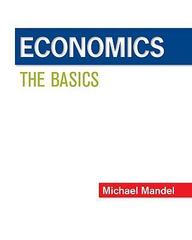Question
Please read each question very carefully to ensure your full comprehension of the question. Question 1 (35 points): The purpose of this question is to
Please read each question very carefully to ensure your full comprehension of the question.
Question 1 (35 points):
The purpose of this question is to examine the rising importance of international trade for a
selected country.
Choose any ONE of the following five countries: Germany, South Korea, Spain, India and
Morocco: and then find the value of merchandise trade for that selected country as a percentage of its GDP for the period from 1980 to 2022. Then, plot the time series data as a line chart and explain how the role of international trade has evolved for this country in the given time period.
Data:
- Go to theWorld Bank: website.
- SelectBrowse by indicatorunder the text bar.
- Search for "Merchandise trade (% of GDP)" and select it.
- Select "DataBank" below the Download option on the right.
- Customize the data now by selecting the country of your choice from the assigned list and set the time as required by selecting the appropriate options on the left of the webpage.
Note:
i) You will need to conduct a bit of external research to answer this question. Provide the answer in a paragraph.
ii) The following 1:22min YouTube video shows how to plot time series data in Excel.
https://www.youtube.com/watch?v=_CRRWnkbyfA
Question 2 (35 points):
The gravity model of trade predicts that the volume of trade between two countries is
positively related to the size of the two economies. To examine this relationship, find the top 20 trading partners for any ONE of the following five countries: Singapore, Portugal, Egypt, Australia and France; and then find the value of export (for the country of your choice) to each trading partner as well their GDPs for any year between 2018 and 2022.
Use Microsoft Excel or any other spreadsheet program to make a scatter plot that focuses on size (GDP) as a determinant of trade. The figure should have GDP (as a percent of the GDP of all top 20 export destinations) on the horizontal axis, and exports (as a percent of the exports to all top 20 export destinations) on the vertical axis.
Explain whether your scatter plot shows any correlation between bilateral trade volume and
the size of an economy as predicted by the gravity model of trade.
Data To find data on the volume of exports to top 20 trading partners -
- Go to the IMF website at https://www.imf.org/en/Home
- SelectDatafrom the top Menu Bar.
- Select "Direction of Trade Statistics" under "National accounts and Price Statistics".
- Select "Charts by Country" underChartson the bottom left of the webpage.
- Select the country of your choice from the assigned list by clicking on the dropdown arrow besideCountryat the top of the chart. Also, select"Export FOB"from the top of the chart.
To find Data on GDP for each country,
- Go to theWorld Bank: website.
- SelectBrowse by indicatorunder the text bar.
- Search for "GDP in current $US" and select it.
- Select CSV below Download and import it.
- Collect GDP data for the trading partners of your selected country and the year.
Note:
The following 7:22min YouTube video shows how to create a XY scatter chart in Excel.
https://www.youtube.com/watch?v=wo-erv8hmxk
Question 3 (30 Points)
The production possibility frontiers for Home and Foreign are depicted in the graph below. Answer the questions that follows.
a. What is the opportunity cost of producing wheat in terms of oil for Home and Foreign? [3 points]
b. Which country has an absolute advantage in producing wheat? Explain. [3 point]
c. Which country has a comparative advantage in producing wheat? Explain. [3 point]
d. What will be the relative price of wheat in Home and Foreign in the absence of trade? Why? Explain. [3 points]
e. Construct the world relative supply curve using the relative price and relative quantity of wheat. Explain clearly the steps of deriving world relative supply curve in details. Illustrate it on a diagram. [3 points]
Now suppose world relative demand takes the following form:
Demand for Oil/demand for Wheat = price of Wheat/price of Oil.
f. Graph the world relative demand curve along with the world relative supply curve. [3 points]
g. What is the free-trade equilibrium relative price of wheat? [3 points]
h. Describe the pattern of specialization and trade. [3 points]
i. Show that both Home and Foreign gain from trade. [3 points]
j. If for some reason workers become less productive in producing wheat at Home and the maximum amount of wheat that Home can produce with all its labour supply decreases to 200 from 300 units. Will there still be the possibility of gains from trade between these two countries? Why or why not? Explain. [3 points]
Step by Step Solution
There are 3 Steps involved in it
Step: 1

Get Instant Access to Expert-Tailored Solutions
See step-by-step solutions with expert insights and AI powered tools for academic success
Step: 2

Step: 3

Ace Your Homework with AI
Get the answers you need in no time with our AI-driven, step-by-step assistance
Get Started


